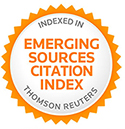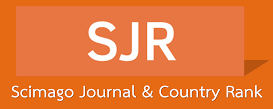El concepto de dominios ambientales como estrategia en la planificación territorial del sistema lacustre Lago de Texcoco, estado de México.
Resumen
El oriente de la Zona Metropolitana de la Ciudad de México es una región con una población superior a los 5 millones de personas. Sin embargo, sólo posee una gran área natural, el lecho lacustre del Lago de Texcoco. Bajo el concepto de los Dominios Ambientales se generaron las Unidades de Gestión Ambiental que coadyuven a revertir el deterioro ecológico del complejo palustre, rehabilitar sus funciones ecológicas y promover actividades que mejoren el estatus económico y el nivel de vida de toda la población afectada.
Palabras clave
Texto completo:
PDFReferencias
ALCOCER-DURAND, J. & E. ESCOBAR-BRIONES. 1992. «The aquatic biota of the
now extinct lacus- trine complex of the Mexico basin». Freshwater Forum,
(3): 171-183.
ALCOCER-DURAND, J. & W. D. WILLIAMS. 1996. «Historical and recent changes
in lake Texcoco, A saline Lake in Mexico». International Journal of Salt
Lake Research, 5: 45-61.
ALCOCER-DURAND, J. y F. BERNAL. 2010. «Limonolgy in Mexico». Hydrobiologia,
: 15-68.
ALCOCER-DURAND, J.; FLORES, M. L.; KATO, E.; LUGO, A. y E. ESCOBAR-BRIONES.
La ictiofauna remanente del lago de México. Actas del VI Congreso
Español de Limnología, 33: 315-321.
AUYANG, S. 1999. Foundations of Complex-system Theories. Economics, Evolutionary
Biology, and Statistical Physics, Cambridge University Press, UK.
AYALA OMAÑA, R.; DAL POZZO, F. y D. I. SÁNCHEZ D. 2015. «Zonificación de
la susceptibilidad a la ocurrencia de movimientos de masa. Microcuencas
Agua Blanca y La Laja. Andes venezolanos». Revista Geográfica Venezolana,
(2): 221-247.
BIFANI, P. 2009. «Los servicios ambientales y la acelerada urbanización». 3C
Conocimiento + Cultura + Ciencia, 1(3): 5-18.
BOSSELMANN, K. 2008. The principle of sustainability. Ashgate Press, UK.
BOTKIN, D. & E. KELLER. 2007. Environmental Science. 6th Edition. John Wiley
y Sons, Inc., USA.
BRAVO-DÍAZ, B. & P. J. GUTIÉRREZ-YURRITA. 2014. «Introducing a new logical
model based on the holistic approach to risk assessment for environmental
disaster». Geological and Environmental Sciences, III (73): 60-64.
CARRÉ, M. N. y L. FERNÁNDEZ. 2013. «¿El cinturón ecológico? Análisis de una
marca urbana que nunca existió». EURE, 39(117): 49-68.
CEBALLOS, G.; LIST, R.; GARDUÑO, G.; LÓPEZ, R.; MUÑOZCANO, M. y E. COLLADO.
La diversidad Biológica del Estado de México (Estudio de estado ).
Gobierno del Estado de México-CONABIO. México.
CODD, A. 2000. «Cyanobacterial toxins, the perception of water quality, and the
prioritisation of eutrophication control». Ecological Engineering, 16(1): 51-60.
CODER, K. 2011. Ecological renovation in communities. Community Forestry
Series. WSFNR. USA.
COMISIÓN PARA LA COOPERACIÓN AMBIENTAL. 1997. Regiones Ecológicas de
América del Norte: hacia una perspectiva común. Comisión para la Cooperación
Ambiental, Montreal, Quebec, Canadá.
COMISIÓN NACIONAL DEL AGUA (CONAGUA). 1999. Estudio de la factibilidad
de la segunda etapa del Proyecto Lago de Texcoco. CONAGUA/SARH. PIAPSA.
México.
COMISIÓN NACIONAL DEL AGUA (CONAGUA). 2002. Determinación de la disponibilidad
de agua en el Acuífero Texcoco, Méx. Gerencia de aguas subterráneas.
México.
DÍAZ-NIGENDA, E.; TATARKO, J.; JAZCILEVICH, A. D.; GARCÍA, E. R.; CAETANO, E. &
L.G. RUIZ-SUÁREZ. 2010. «A modeling study of Aeolian erosion enhanced by
surface wind confluences over Mexico City». Aeolian Research, 2: 143-157.
EDMUNDS, W. M.; CARRILLO-RIVERA, J. J. & A. CARDONA. 2002. «Geochemical evolution
of groundwater beneath Mexico City». Journal of Hydrology, 258: 1-24.
ELIZONDO, C.; MÁRQUEZ-LINARES, M. A.; MARÍN, L. y P. J. GUTIÉRREZ-YURRITA.
«Flora que Crece Naturalmente en Presas de Jale Minero Abandonadas
Susceptibles de Ser Utilizadas en Reclamación, Zimapán, Hidalgo, México».
Interciencia, 41(7): 492-498.
FERNÁNDEZ-LUQUENO, F.; THALASSO, M. L.; LUNA-GUIDO, J. M.; CEBALLOS-RAMÍREZ,
I. M.; ORDÓÑEZ-RUIZ, L. & L. DENDOOVEN. 2009. «Flocculant in wastewater
affects dynamics of inorganic N and accelerates removal of phenanthrene
and anthracene in soil». Journal of Environmental Management, 90:
813-2.818.
FUNK, V.; RICHARDSON, K. & S. FERRIER. 2005. «Survey gap analyses in expeditionary
research: where do we go from here?» Biological Journal of Linnean
Society, 85: 549-567.
GALVÁN, R. y R. SERRANO. 2008. Ordenamiento Ecológico del Territorio del Estado
de México. Memorias del Primer Congreso Nacional de Ordenamiento Ecológico
del Territorio. 1: 1-3.
GÖTMARK, F. 1991. «Naturalness as an evaluation criterion in nature conservation;
a response to Anderson». Conservation Biology, 6: 455-457.
GUISAN, A.; EDWARDS, T. & T. HASTIE. 2002 «Generalized linear and generalized
additive models in studies of species distribution: Setting the scene». Ecological
Modeling, 157: 89-100.
GUTIÉRREZ-CASTORENA, M.; STOOPS, G. y C. A. ORTIZ-SOLORIO. 1998. «Carbonato
de Calcio en los suelos del Ex-Lago de Texcoco». Terra, 16(1): 11-19.
GUTIÉRREZ-YURRITA, P. J. 2000. «Reflexiones sobre la gestión de los cuerpos de
agua epicontinental y su papel en la cultura». Zoología Informa, 43: 27-57.
GUTIÉRREZ-YURRITA, P. J. 2004a. «The use of the crayfish fauna in México: Past,
Present…and future?» Freshwater Crayfish, 14: 45-51.
GUTIÉRREZ-YURRITA, P. J. 2004b. «El Paradigma de la ecología integral en la gestión
de los recursos naturales». Sapere, 1(1): 4-13.
GUTIÉRREZ-YURRITA, P. J. 2009a. ¡A diseñar el futuro! El Holismo de la Tercera
Cultura: hacia la integración científica y cultural. Instituto Politécnico Nacional-
Centro de Estudios Jurídico Ambientales. México.
GUTIÉRREZ-YURRITA, P. J. 2009b. «Conceptos y aplicaciones de la ecología integral
». En: R. CANTÚ CHAPA, Comp. Los desafíos ambientales y el desarrollo en
México. pp. 85-95. Instituto Politécnico Nacional- Plaza y Valdés, Serie Ecología
y Desarrollo Sustentable. México.
GUTIÉRREZ-YURRITA, P. J. 2009c. «El desarrollo sustentable visto por un ecólogo:
mitos, controversias y futuro. Tercera parte». Derecho Ambiental y Ecología,
(5): 59-65.
GUTIÉRREZ-YURRITA, P. J. 2011a. «How to restore riverbanks in natural ecosystems
with many people using ecological services at the same time?» Chemical Engineering
and Applications, 23: 15-20.
GUTIÉRREZ-YURRITA, P. J. 2011b. «La hipótesis de los subrogados ecológicos». Serendipia,
II (21): 15.
GUTIÉRREZ-YURRITA, P. J. 2011c. «La Gestión y el Manejo Holístico de la Naturaleza
en la era de la Tercera Cultura». En: E. CAMPUZANO & M. L. VALDERRÁBANO,
Comp. Medio ambiente, Sociedad y Políticas ambientales en el México c ontemporáneo:
Una revisión interdisciplinaria. pp. 9-40. Porrúa-IPN. México.
GUTIÉRREZ-YURRITA, P. J. 2012. «A reflection on the importance of estimating
environmental flows in seasonal rivers. The case of rivers in Ce ntral Mexico».
Environment, Energy and Biotechnology, 33: 55-59.
GUTIÉRREZ-YURRITA, P. J. 2013. «Hacia el diseño de una ciudad sustentable». Pragma,
espacio y comunicación visual, 4(9): 2-18.
GUTIÉRREZ-YURRITA, P. J. 2014a. «Holistic management of temporary watersheds in
Central Mexico: an improved easy mathematical model for decision-makers».
International Journal of Ecology and Environmental Sciences, 40(2): 95-110.
GUTIÉRREZ-YURRITA, P. J. 2014b. «A socio-economical perspective for a holistic
management of temporary watersheds in Central Mexico based on a simple
mathematical model for decision-makers». International Journal of Natural
Sciences Research, 2(10): 206-226.
GUTIÉRREZ-YURRITA, P. J. 2014c. «Fuzzy logic applied into a holistic model to manage
seasonal watersheds in México». EnviroGeoChimica Acta (special issue), 1(6):
-374.
GUTIÉRREZ-YURRITA, P. J. y M. A. LÓPEZ. 2011. «Reflexiones iusambientalistas sobre
los criterios para proponer espacios naturales protegidos: hacia una nueva categoría
de conservación, el Paisaje metafísico (o espiritual)». Revista Aranzadi
de Derecho Ambiental, 20(2): 19-42.
JÁUREGUI, E. 1990. «The dust storms of Mexico City». International Journal of Climatology,
:169-180.
LEATHWICK, J. R.; OVERTON, J. & M. MCLEOD. 2003. «An environmental domain
classification of New Zealand and its use as a tool for biodiver sity management
». Conservation biology, 17(6): 1.612-1.623.
LEY GENERAL DE EQUILIBRIO ECOLÓGICO y LA PROTECCIÓN AL AMBIENTE (LGEEPA).
Artículo 20 BIS 5, Fracción IV. Congreso de la Unión. Última reforma
Diario oficial de la Federación 28-01-2011. México.
MAEDA, A. 1991. «Distribution of species of Anostraca, Notostraca, Spinicaudata and
Laevicaudata in Mexico». Hydrobiologia, 212: 209-219.
MARGULES, CH. y S. SARKAR. 2009. Planeación Sistemática de la Conservación. Cambridge
University Press-CONABIO. México.
MARGULES, CH.; PRESSEY, R. & P. WILLIAMS. 2002. «Representing biodiversity: data
and procedures for identifying priority areas for conservation». Journal of Biosciences,
(27): 309-326.
MARTÍNEZ, A. & E. JÁUREGUI. 2000. «On the environmental role of urban lakes in
Mexico City». Urban Ecosystems, 4: 145-166.
MEDINA, E. E. y P. J. GUTIÉRREZ-YURRITA. 2016. «El ecoturismo en México. Análisis
crítico y tendencias para su desarrollo». Ide@s (Consejo de Ciencia y Tecnología
del Estado de Guanajuato), 11(134): 27-47
MUÑOZ, E.; ARUMÍ, J. L. & D. RIVERA. 2013. «Watersheds are not static: Implications
of climate variability and hydrologic dynamics in modeling». Bosque, 34(1): 7-11.
OSHRY, B. 2008. Seeing Systems: Unlocking the Mysteries of Organizational Life. Berrett-
Koehler Pub. UK.
PELÁEZ-GÁLVEZ, M. G.; BRAVO-DÍAZ, B. y P. J. GUTIÉRREZ-YURRITA. 2015. «Percepción
ciudadana de la institucionalización de la política mexicana de cambio
climático». Revista Aranzadi de Derecho Ambiental, 30(17): 521-541.
PONCE, M.; VALLEJOS, O. y G. DANILUK. 2012. «Comparación de fórmulas chilenas e
internacionales para valorar el arbolado urbano». Bosque, 33(1): 69-81.
PRESSEY, R.; FERRIER, S.; HAGER, T.; WOODS, C.; TULLY, S. & K. WEINMAN. 2003.
«Formulating conservation targets for biodiversity pattern and process in the
Cape Floristic Region, South Africa». Biological Conservation, 112: 99-127.
RAMOS, J. A.; NOYOLA, C. & F. C. TAPIA. 2010. «Aquifer vulnerability and groundwater
quality in mega cities: case of the Mexico Basin». Environmental and Earth
Sciences, 61: 1.309–1.320.
RIERA, P.; GARCÍA, D.; KRISTRÖM, B. y R. BRÄNNLUND. 2005. Manual de Economía
ambiental y de los recursos naturales. Paraninfo. España.
ROMERO, J. R. 2003. Los privilegios perdidos: Hernando Alvarado Tezozómoc, su
tiempo, su nobleza y su crónica mexicana. Universidad Nacional Autónoma de
México. Instituto de Investigaciones Históricas. Libro consultado en la siguiente
liga de internet desde el 14 de junio de 2011 (actualizada la visita el 19 de enero
de 2017): https:// UAMkeWsC&oi=fnd&pg=PA13&dq=ROMERO,+J.+2003.+Los+privilegios+
perdidos&ots=1T17yRQv0C&sig=zAgzVU3RjLGBQIXjmfuB3rpSf5A#v=onepage&
q&f=false
SAN ROMÁN, J.; MUÑOZ, N.; GUTIÉRREZ-YURRITA, P. J.; RODRÍGUEZ, P. F. & M. A.
LÓPEZ. 2011. «Survey of Pollution Sources into the Lake Texcoco Ecological
Park, Central México». Chemical Engineering and Applications, 23: 10-14.
SAN ROMÁN, J.; MUÑOZ, N.; LÓPEZ, M. A. & P. J. GUTIÉRREZ-YURRITA. 2012. «Using a
geo-environmental index to diagnose and prevent environmental pollution by
trace metals in the Texcoco Lake Ecological Park, Mexico». Environment,
Energy and Biotechnology, 33: 86-90.
SAN ROMÁN, J.; MARÍN-GARCÍA, L.; MUÑOZ, N.; LÓPEZ, M. A. & P. J. GUTIÉ-
RREZ-YURRITA. 2013. «Ecological considerations for the management of
a protected area with a strong urban pressure: the case of Lake Texcoco,
México». International Journal of Ecology and Environmental Sciences,
(1): 26-37.
SARKAR, S.; PAPPAS, C.; GARSON, J.; AGGARWAL, A. & S. CAMERON. 2004.
«Place priorization for biodiversity conservation using probabilistic surrogate
distribution data». Diversity and Distributions, 10: 125-133.
SALAZAR, R.; SZIDAROVSZKY, F. & A. ROJANO. 2010. «Water Distribution Scenarios
in the Mexican Valley». Water Resources Management, 24: 2959-2970.
SASSEN, S. 2007. «El reposicionamiento de las ciudades y regiones urbanas en
una economía global: ampliando las opciones de políticas y gobernanza».
EURE, 33(100): 9-34.
SAVORY, A. 2005. Manejo holístico. Un nuevo marco metodológico para la toma
de decisiones. SEMARNAT. México.
SHELTON, D. 2005. Global legal instruments and jurisprudente on landscape,
nature and culture. Paisagem, Natureza e Direit. Instituto O Direito por
um Planeta Verde. Brazil.
SODHI, N. S. & P. EHRLICH. 2010. Conservation Biology for all. Oxford University
Press. USA.
USFWS; CWS & SEMARNAT. 2004. North American Waterfowl Management
Plan: People conserving waterfowl and wetlands. SEMARNAT. México.
VANE-WRIGHT, R.; HUMPHRIES, C. & P. WILLIAMS. 1991. «What to protect?
Systematics and the agony of choice». Biological Conservation, 55: 235-254.
VIVEROS, H.; CAMARILLO, A.; SÁENZ, C. y A. APARICIO. 2013. «Variación
altitudinal en caracteres morfológicos de Pinus patula en el estado de
Oaxaca (México) y su uso en la zonificación» . Bosque, 34(2): 173-179.
YERENA, J. I.; JIMÉNEZ, J.; AGUIRRE, O. y E. TREVIÑO. 2012. «Contenido de
carbono total en los componentes de especies arbóreas y arbustivas en
áreas con diferente uso, en el matorral espinoso tamaulipeco, en México
». Bosque, 33(2): 145-152.
ZAMBRANO, L.; CONTRERAS, V.; MAZARI-HIRIART, M. & A. ZARCO-ARISTA.
«Spatial Heterogeneity of Water Quality in a Highly Degraded Tropical
Freshwater Ecosystem». Environmental Management, (43): 249-263.
Enlaces refback
- No hay ningún enlace refback.
DOI: https://doi.org/10.53766/RGV
La Revista Geográfica Venezolana se encuentra actualmente indizada en:
 |  |  | |
 |  |  |  |
 |  |  |  |
![]()
Todos los documentos publicados en esta revista se distribuyen bajo una
Licencia Creative Commons Atribución -No Comercial- Compartir Igual 4.0 Internacional.
Por lo que el envío, procesamiento y publicación de artículos en la revista es totalmente gratuito.
